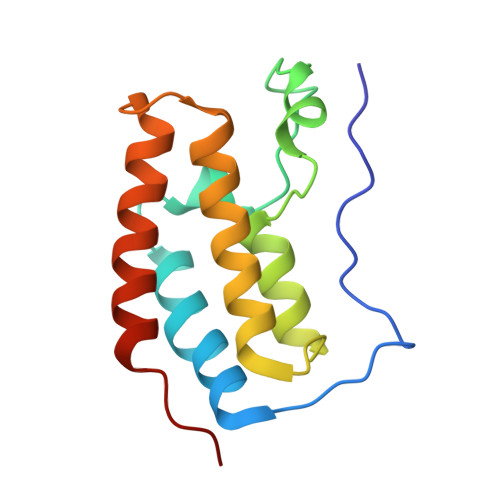Discovery of a new chemical series of BRD4(1) inhibitors using protein-ligand docking and structure-guided design.
Duffy, B.C., Liu, S., Martin, G.S., Wang, R., Hsia, M.M., Zhao, H., Guo, C., Ellis, M., Quinn, J.F., Kharenko, O.A., Norek, K., Gesner, E.M., Young, P.R., McLure, K.G., Wagner, G.S., Lakshminarasimhan, D., White, A., Suto, R.K., Hansen, H.C., Kitchen, D.B.(2015) Bioorg Med Chem Lett 25: 2818-2823
- PubMed: 26022843
- DOI: https://doi.org/10.1016/j.bmcl.2015.04.107
- Primary Citation of Related Structures:
4YH3, 4YH4 - PubMed Abstract:
Bromodomains are key transcriptional regulators that are thought to be druggable epigenetic targets for cancer, inflammation, diabetes and cardiovascular therapeutics. Of particular importance is the first of two bromodomains in bromodomain containing 4 protein (BRD4(1)). Protein-ligand docking in BRD4(1) was used to purchase a small, focused screening set of compounds possessing a large variety of core structures. Within this set, a small number of weak hits each contained a dihydroquinoxalinone ring system. We purchased other analogs with this ring system and further validated the new hit series and obtained improvement in binding inhibition. Limited exploration by new analog synthesis showed that the binding inhibition in a FRET assay could be improved to the low ¦̀M level making this new core a potential hit-to-lead series. Additionally, the predicted geometries of the initial hit and an improved analog were confirmed by X-ray co-crystallography with BRD4(1).
Organizational Affiliation:
Albany Molecular Research (AMRI), 26 Corporate Circle, PO Box 15098, Albany, NY 12212-5098, USA.

















